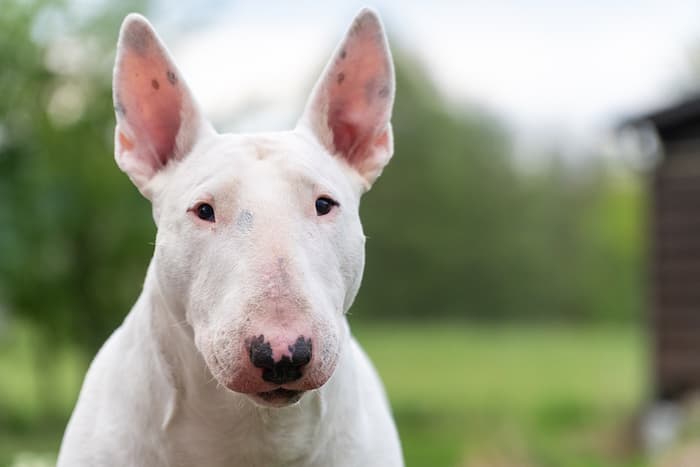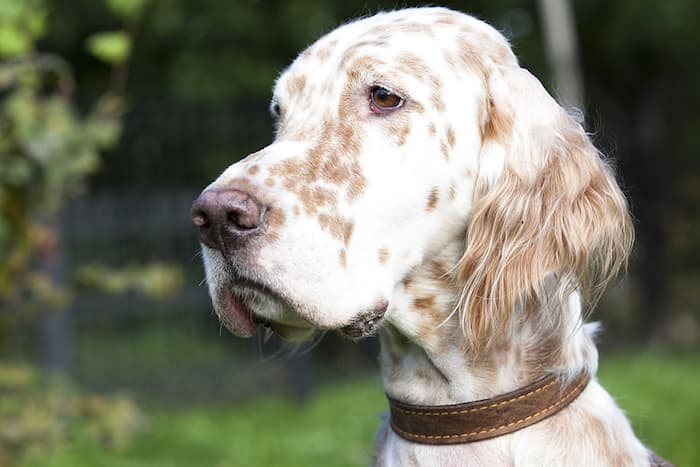Congenital deafness in dogs is more prevalent in certain breeds and is linked to coat color. Congenital means that a health condition is present at birth and not acquired as a result of something else.
- Piebald
- Merle
- Roan
- White
- Dalmatian
- Bull Terrier
- English Setter
- Jack Russell Terrier
- Australian Cattle Dog
- English Cocker Spaniel
Piebald means a predominately white coat that has some colored markings or patches. An example of this would be the Dalmatian. Merle is a term that refers to a desaturated color condition, for example, black that has faded to greys or blues or red that has been reduced to cream. A roan coat will have white or gray hairs that are sprinkled randomly throughout.
Deafness and Coat Color
So, what does coat color have to do with hearing? On the surface, the two seem to be completely unrelated. However, the genes that control coat color and hearing are linked. It’s just how genes interact sometimes. Some dog breeds always have the same coloring. An adult Dalmatian will always be mostly white with black spots. However, some other breeds may be white or may be other colors, such as a Bull Terrier. A white Bull Terrier is over eight times more likely to be deaf in both ears as a Bull of another coat color.
Deafness Statistics in Some Breeds
Some popular dog breed health issues include a solid color English Cocker Spaniel is three times less likely to be deaf in both ears than a multi-colored one. Dalmatians are born deaf in both ears about 22 percent of the time. The Australian Cattle Dog is born deaf about 11 percent of the time, with Jack Russell Terriers weighing in at eight percent dual deafness at birth. Although some at-risk breeds have congenital deafness in only one ear, deafness in both is far more common in all the breeds listed below.





